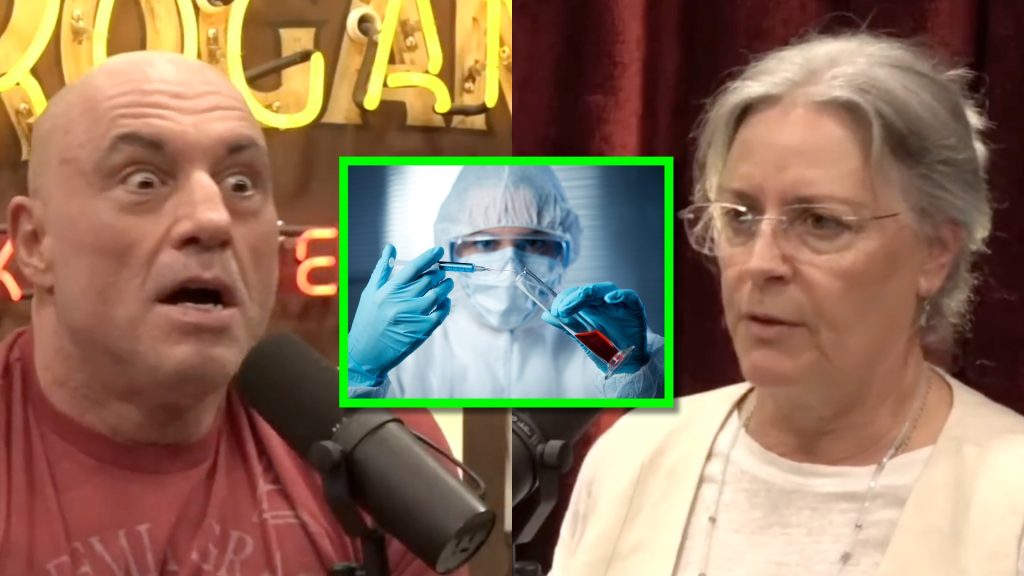
Everything you thought you knew about polio might be wrong. Dr. Suzanne Humphries, a former board-certified nephrologist and co-author of Dissolving Illusions: Disease, Vaccines, and the Forgotten History, recently appeared on The Joe Rogan Experience, revealing eye-opening facts that challenge mainstream narratives about vaccines.

The Vaccine Debate: A Hidden History
For decades, people have been told that vaccines are completely safe and highly effective. However, Dr. Humphries exposed a long history of misleading information, starting with a major event in 1986. That year, President Ronald Reagan signed the National Childhood Vaccine Injury Act into law, altering the landscape of vaccine accountability.
Before this law, vaccine manufacturers faced numerous lawsuits. The 1976 swine flu vaccine disaster led to a surge in Guillain-Barré syndrome cases, making it difficult for companies to secure insurance. Faced with financial ruin, these corporations turned to the government for protection. In response, lawmakers granted them legal immunity, ensuring they could no longer be sued for vaccine-related injuries.
A Legal Shield for Vaccine Makers
Pharmaceutical companies, including Wyeth (now Pfizer), acknowledged that vaccines carried inherent risks. Yet instead of improving safety, they gained blanket immunity from lawsuits. This protection allowed manufacturers to experiment with vaccine ingredients without fear of legal consequences.
With legal barriers removed, the childhood vaccine schedule expanded rapidly. Safety testing protocols also shifted. Most people assume vaccines undergo rigorous testing with placebo controls, like other medications. However, Dr. Humphries pointed out that vaccines are often tested against other vaccines rather than inert placebos. This practice can mask potential side effects and make harmful reactions harder to detect.
Polio: A Change in Definition, Not Eradication
One of Dr. Humphries’ most controversial claims involved polio. The common belief is that vaccines eradicated the disease, but she argued that polio never truly disappeared.
“Polio still exists,” she stated. “It’s just been reclassified.”
According to Humphries, the biggest shift wasn’t the vaccine’s effectiveness but how polio was diagnosed. In the 1940s and 1950s, the diagnostic criteria for polio differed significantly from those used after the vaccine’s introduction. Once definitions changed, cases that would have previously been labeled as polio were instead diagnosed as Guillain-Barré syndrome, coxsackievirus, echovirus, or attributed to lead or mercury poisoning.
When the conversation turned to polio, Dr. Humphries blew just about everyone’s mind on the internet. She challenged one of the most sacred beliefs in modern medicine: that vaccines eradicated polio.
— The Vigilant Fox 🦊 (@VigilantFox) March 27, 2025
The truth is that polio wasn’t actually eradicated. “Polio is still here. Polio… pic.twitter.com/wZ91AERL6d
Environmental Factors and the Rise of Polio Cases
Dr. Humphries also highlighted another overlooked aspect—the role of environmental toxins. She pointed out that the rise in polio cases closely followed the increased use of toxic chemicals like DDT. This raises questions about whether external factors, rather than just the virus itself, played a significant role in the spread of polio.
Final Thoughts
Dr. Humphries’ insights challenge long-standing medical beliefs. Whether or not one agrees with her, her research raises important questions about vaccine history, corporate influence, and public health narratives. Understanding these factors can help people make more informed decisions about medical interventions.


